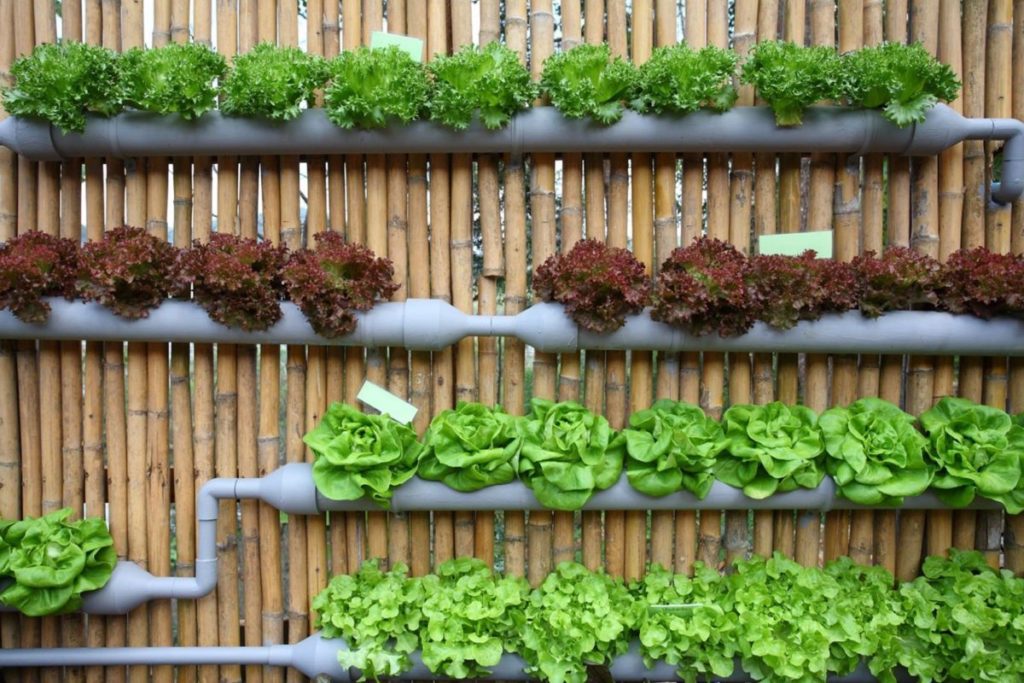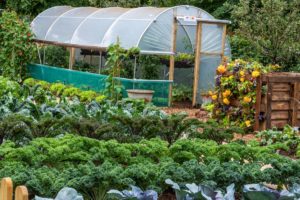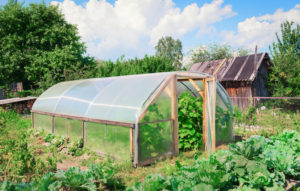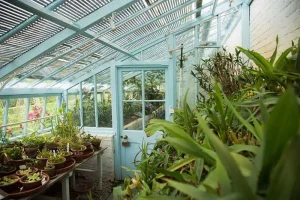As more people turn to vertical farming as a way to grow their own food at home or commercially, it’s essential to understand proper maintenance techniques to keep your garden thriving.
Proper care can help prevent pests, diseases, and nutrient deficiencies, while also promoting healthy growth and maximizing yields.
We’ll cover practical tips for maintaining a successful vertical farm, from monitoring temperature and humidity levels to controlling pests and providing adequate light and fertilization.
Whether you’re just starting out or looking to improve your current setup, these strategies will help ensure that your crops continue to flourish.
Monitor and control temperature and humidity
Vertical farming is all about creating the perfect environment for your plants to grow. Make sure to monitor and control the temperature and humidity levels in your vertical farm to ensure that your plants are getting the optimal conditions they need to thrive.
One of the most critical factors in a vertical farm is temperature control.
Most crops require a specific temperature range to grow, and even slight variations can impact their health and yield.
For example, leafy greens like lettuce and kale prefer daytime temperatures between 65-75°F (18-24°C), while herbs like basil and cilantro prefer warmer temperatures around 75-85°F (24-29°C).
In addition to temperature, humidity levels also play a important role in a vertical farm.
Plants like tomatoes and cucumbers require a relatively high humidity level, around 60-70%, to prevent water loss and promote healthy growth.
Monitoring and controlling temperature and humidity levels in your vertical farm is essential to ensure that your plants are receiving the optimal conditions they need to thrive.
Use an integrated pest management (IPM) system
Pests can quickly become a problem in a closed vertical farm environment. Use an IPM system to monitor for pests and prevent infestations, using techniques like sticky traps, pheromone disruptors, and beneficial insects to control pests without harming the environment.
In a closed vertical farm environment, pests can quickly become a significant problem, threatening the health and productivity of the crops.
To prevent infestations and maintain a healthy and sustainable farm, it is important to implement an Integrated Pest Management (IPM) system.
This comprehensive approach involves monitoring for pests, identifying the severity of infestations, and applying appropriate control measures without harming the environment.
One effective technique for monitoring pest populations is the use of sticky traps.
These traps can be placed throughout the farm to capture and identify pests, allowing for early detection and treatment.
Pheromone disruptors can be used to disrupt the mating and reproduction of pests, further reducing their populations.
Beneficial insects, such as ladybugs and lacewings, can also be introduced to the farm to prey on pests and maintain a balanced ecosystem.
These beneficial insects are safe for the environment and can be used in conjunction with other control measures to effectively manage pest populations.
By implementing an IPM system that includes monitoring, pheromone disruptors, beneficial insects, and other control measures, closed vertical farms can effectively prevent and manage pest infestations while maintaining a sustainable and healthy environment for crops to thrive.
Practice good sanitation and hygiene
Keep your vertical farm clean and hygienic to prevent the spread of disease and pests. Regularly clean and disinfect your equipment, and keep your workers’ clothes and tools clean to prevent cross-contamination.
Maintaining a clean and hygienic vertical farm is important to prevent the spread of disease and pests.
To ensure a healthy and thriving environment for your crops, it is essential to regularly clean and disinfect your equipment, as well as keep your workers’ clothes and tools clean to prevent cross-contamination.
This includes sanitizing and disinfecting all surfaces, equipment, and tools used in the cultivation process.
Ensure that your workers wear clean clothes and shoes, and that their tools and equipment are properly cleaned and sanitized after each use.
By implementing these practices, you can prevent the spread of disease and pests, ensuring a healthy and successful vertical farm.
Manage nutrient and water supplies
Proper nutrient and water management is important for a thriving vertical farm. Monitor your plants’ nutrient and water needs, and adjust your system as needed to ensure optimal growth and yields.
To achieve optimal growth and yields in your vertical farm, it is important to monitor your plants’ nutrient and water needs, and adjust your system accordingly.
This involves regularly checking the nutrient levels in the growing medium and making adjustments as needed to ensure that your plants are receiving the right balance of nutrients.
You should monitor the water levels in your system and make adjustments to ensure that your plants are receiving the right amount of moisture.
This may involve adjusting the frequency or duration of watering, depending on the specific needs of your crops.
By closely monitoring your plants’ nutrient and water needs, you can ensure that your vertical farm is running at its peak performance, with healthy, thriving plants that produce high yields.
Use aeroponics or nutrient film techniques
In a vertical farm, space is limited, so maximize your growing area by using aeroponics or nutrient film techniques. These methods allow you to grow more plants in a smaller space, and can improve plant growth and yields.
In a vertical farm, space is a precious commodity, and optimizing growing areas is essential for maximizing yields and profits.
To achieve this, consider adopting aeroponics or nutrient film techniques (NFT) for your crop production.
These methods offer several benefits for space-constrained farming.
Aeroponics, a system that suspends roots in the air and provides nutrients through a fine mist, can increase plant growth by up to 30% compared to traditional soil-based methods.
This is because aeroponics allows for more precise control over nutrient delivery and oxygen availability, leading to healthier plants and faster growth.
By using aeroponics, you can grow more plants in a smaller space, as the root systems can be stacked vertically, making the most of your vertical farm’s limited footprint.
Nutrient Film Technique (NFT) is another highly efficient method for growing crops in a vertical farm.
In NFT, plants are arranged in a loop of nutrient-rich film, which provides a continuous supply of water and nutrients to the roots.
This technique can lead to increased yields of up to 20%, due to the consistent nutrient delivery and improved root health.
Moreover, NFT systems can be easily scaled up or down, allowing you to adjust your crop production based on demand and available space.
By adopting aeroponics or NFT methods in your vertical farm, you can optimize your growing areas, increase plant growth and yields, and ultimately maximize your profits.
These techniques offer a solution for efficient crop production in limited spaces, making them an essential tool for any successful vertical farm.
Use LED grow lights
LED grow lights are a popular choice for vertical farming because they are energy-efficient, produce minimal heat, and can be tailored to the specific needs of your plants. LED grow lights can also be adjusted to different intensities and spectrums to optimize plant growth and yields.
LED grow lights are an excellent choice for vertical farming due to their energy efficiency, minimal heat production, and versatility in catering to the specific needs of your plants.
Unlike traditional HPS (high-pressure sodium) lights that generate a lot of heat and require a lot of energy, LED grow lights consume less power while providing comparable or even better light spectra for plant growth.
This means that not only do LED grow lights save energy, but they also help to reduce the overall temperature in the growing environment, which can lead to healthier plant growth and increased yields.
Moreover, LED grow lights can be adjusted to different intensities and spectrums to optimize plant growth and yields.
This is especially important in vertical farming, where space is limited and each plant needs to be optimized for maximum yield.
By adjusting the intensity and spectrum of the LED grow lights, farmers can tailor the lighting conditions to the specific needs of each plant, leading to healthier and more productive crops.
For instance, certain LED grow lights can be programmed to emit a higher intensity of blue light, which can help to promote leafy greens and other vegetative growth.
Conversely, other LED grow lights can be programmed to emit a higher intensity of red light, which can help to promote fruiting and flowering in plants.
Overall, LED grow lights offer a highly efficient and versatile lighting solution for vertical farming, making them an ideal choice for indoor agriculture.
Implement vertical farming techniques
Take advantage of the vertical space in your farm by using trellises, vertical growing systems, and other techniques to maximize your growing area. This will help you get more produce from a smaller footprint.
By utilizing trellises, vertical growing systems, and other techniques, you can maximize your growing area and increase your yield per square foot.
This is especially useful for small-scale farmers who may have limited acreage but want to maximize their production.
Trellises can be used to support climbing plants like peas, beans, and tomatoes, allowing them to grow upwards instead of horizontally.
This not only makes the most of your available space but also helps to improve air circulation and reduce the risk of disease.
Vertical growing systems like hydroponics and aquaponics can be used to grow a wide variety of crops in a smaller footprint, making them ideal for farms with limited space.
By adopting these techniques, you can significantly increase your crop yields and make the most of your valuable farm land.
Monitor and control pests and diseases
Regularly monitor your plants for signs of pests and diseases, and take action as needed to prevent infestations and infections from spreading. Use integrated pest management (IPM) techniques to control pests and diseases while minimizing harm to your plants and the environment.
As a responsible plant owner, it is important to regularly monitor your plants for signs of pests and diseases, and take prompt action to prevent infestations and infections from spreading.
Integrated pest management (IPM) techniques can help you control pests and diseases while minimizing harm to your plants and the environment.
To monitor your plants effectively, you should look for signs of pest and disease infestations, such as discoloration, wilting, or the presence of insects or fungal growths.
Regularly inspect your plants, especially new growth, for any unusual or suspicious symptoms.
Keep a record of your observations to track any changes over time.
When you detect signs of pests or diseases, take prompt action to prevent them from spreading.
Use IPM techniques to control pests and diseases, such as introducing beneficial insects or using natural or chemical controls.
Always prioritize the safest and most targeted approach, as some pest control methods can harm the environment and your plants.
For instance, if you notice aphids on your plants, you can introduce ladybugs or lacewings, which are natural predators of aphids.
These beneficial insects will feed on the aphids, controlling their populations while minimizing the use of chemical pesticides.
Similarly, if you suspect fungal diseases, you can use fungicides or remove infected leaves to prevent the disease from spreading.
Apply fungicides only when necessary, and choose products that are safe for your plants and the environment.
Integrated pest management techniques can help you control pests and diseases effectively while minimizing the use of harmful chemicals.]]
Monitoring your plants for signs of pests and diseases is a important aspect of maintaining a healthy and thriving garden.
It is essential to regularly inspect your plants for any signs of infestation or infection, such as discoloration, wilting, or the presence of insects or fungal growth.
By catching these issues early on, you can take action to prevent them from spreading and causing further damage.
One effective method of pest and disease control is through integrated pest management (IPM).
IPM involves using a combination of natural and chemical controls to target pests and diseases while minimizing harm to the environment and your plants.
For instance, if you notice aphids on your plants, you can introduce ladybugs or lacewings, which are natural predators of aphids.
These beneficial insects will feed on the aphids, reducing their populations and preventing the need for chemical pesticides.
In addition to IPM, there are other non-chemical methods of pest and disease control that you can employ.
For example, you can use neem oil, a natural pesticide that is derived from the seeds of the neem tree.
Neem oil can be applied directly to the plant, where it will kill pests and diseases while leaving the plant intact.
You can also use fungicides, such as bicarbonate of soda, to treat fungal infections.
It is essential to take action as soon as you notice any signs of pests or diseases.
The longer you wait, the more extensive the damage will be.
For example, if you notice powdery mildew on your plants, you must treat them immediately to prevent the fungus from spreading.
By regularly monitoring your plants and taking action when necessary, you can effectively manage pests and diseases without resorting to chemical pesticides.
Use recycled materials
Consider using recycled materials for your vertical farm infrastructure, such as shipping containers or other repurposed materials. This can reduce waste, save money, and help create a more sustainable system.
Using recycled materials for your vertical farm infrastructure is not only a sustainable solution, but it also offers numerous benefits.
Shipping containers, for instance, can be repurposed as growing units, providing an efficient and cost-effective alternative to traditional construction methods.
These containers are often made of durable materials that can withstand harsh weather conditions and can be easily customized to suit your farming needs.
Repurposing materials helps reduce waste and saves resources, contributing to a more sustainable system.
By incorporating recycled materials into your vertical farm design, you can not only reduce your carbon footprint but also create a more environmentally friendly and cost-effective farming system.
Regularly inspect and maintain your system
Regular inspections and maintenance can help prevent equipment failure and ensure that your vertical farm is running efficiently. Monitor your system’s performance, identify and address any issues, and perform routine maintenance to keep your farm thriving.
Regular inspections and maintenance are important to preventing equipment failure and ensuring the efficiency of your vertical farm.
By regularly monitoring your system’s performance, you can quickly identify any issues before they become major problems.
This can help you avoid costly repairs and downtime, and ensure that your farm is running at its full potential.
To keep your farm thriving, it’s important to perform routine maintenance on all of your equipment and systems.
This can include cleaning and replacing filters, lubricating moving parts, and checking for any signs of wear and tear.
By staying on top of maintenance, you can help prevent equipment failure and prolong the lifespan of your systems.
Regular inspections can help you identify any potential issues before they cause major problems.
For example, by regularly checking the pressure and flow rate of your irrigation system, you can catch any leaks or blockages before they cause damage to your crops.
Similarly, by regularly inspecting your lighting and climate control systems, you can ensure that they are functioning properly and making any necessary adjustments to optimize your crop growth.
By prioritizing regular inspections and maintenance, you can help prevent equipment failure and ensure that your vertical farm is running efficiently and effectively.
This can help you achieve your goals of producing high-quality crops and reducing waste, while also saving time and money in the long run.
Want More? Dive Deeper Here!
Hey there! If you’re the type who loves going down the rabbit hole of information (like we do), you’re in the right spot. We’ve pulled together some cool reads and resources that dive a bit deeper into the stuff we chat about on our site. Whether you’re just killing time or super into the topic, these picks might just be what you’re looking for. Happy reading!
- Room for growth: Princeton’s Vertical Farming Project harvests knowledge for a budding industry
- Small-scale hydroponics | UMN Extension
- Greenhouse & Floriculture: Cleaning and Disinfecting the Greenhouse | Center for Agriculture, Food, and the Environment at UMass Amherst
- Urban farming: the Good, the Bad, and the Bugly – Growing Roots






